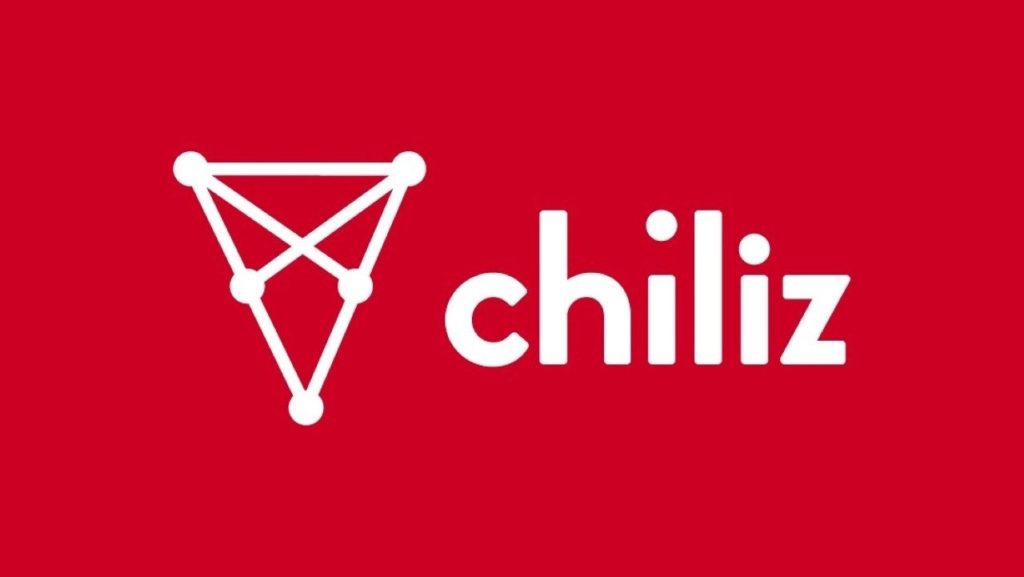Immutable X, the platform of choice for world-class Web3 games, announces a partnership tournament with first-person shooter (FPS) gaming leader Wagyu Games to release the flagship game, Undead Blocks.
Undead Blocks was born in response to the traditional, outdated gaming model, where players are forced to pay excessive premiums for in-game items that lose value over time due to the inability of the original purchaser to resell the items. For context, in 2020, experts estimated that players spent nearly $74 billion on these in-game items without building any equity on these purchases. Recognizing the negative impact this loss of value has on players, a genre of blockchain-based games emerged with a model that would flip traditional gaming on its head by enabling players to build equity on their purchased assets.
Calling all survivors — Undead Blocks is inviting the public to participate in the world’s first AAA kill-to-earn first-person zombie shooter and survival game. To bring back the nostalgia of zombie FPS games, players are being introduced to the same unforgettable, heart-racing journey that comes with the traditional fight to the death, now replete with extensive loadout variations (2,700 in total) and lucrative rewards.
However, the real difference in the Undead Blocks release is the power being brought back and given to the gamers. With gas-free and fully carbon-neutral NFTs utilized for each team’s fight, players will experience the play-and-earn mentality — a standard that is vastly unlike the blockchain games currently available in the market.
Empowering players through ownership
To spread the word, Undead Blocks has announced its partnership with Immutable X, a key collaborator for its strategy to expand its reach into mobile FPS gaming. With the intent to empower gamers through ownership of their weapons and skins as NFTs, Wagyu Games believes this is likely to be a trend-setting development in gaming history. Immutable X will make this possible for Undead Blocks by ensuring all in-game assets are gas-free, fully carbon neutral and tradeable with high speed on the world’s leading open-source blockchain, Ethereum.
In response to this partnership, Grant Haseley, the executive director of Wagyu Games, shares, “As Wagyu Games continues to empower FPS gamers to truly own their weapon and character skins for the first time in their lives, so shall we scale with Immutable, the world’s premier gasless, zk-Rollup solution. Immutable’s placement of entertainment value above all aligns closely with our strategic vision of being the premier Web3 FPS gaming studio for PC, Mac and mobile gamers.”
The joint efforts of Wagyu Games and Immutable X will kick off with a celebratory free-to-play public Partner Launch Weekend Tournament, complete with attractive prizes worth $10,000 in ZBUX, the in-game token that can be swapped for any crypto on the Wagyu Games website.
However, unlike comparable blockchain tournaments, an NFT-compatible crypto wallet is not a requirement to participate in this tournament. Instead, players can participate with an email address, which will unlock access to the tournament. Here, players will use their NFT-based weapons to kill zombies, earning more ZBUX, which can later be swapped for alternate crypto assets via multi-chain withdrawals or used to upgrade Undead Blocks NFTs and purchase other perks.
The Undead Blocks full multiplayer experience is slated to launch in Q4 of 2022. For event details, interested participants are encouraged to follow the official Undead Blocks account on Twitter, where all up-to-date information will be released.
About Immutable
Immutable is a global blockchain gaming company with a mission to bring digital asset ownership to billions of users through the power of immutable NFTs. The Immutable Group consists of Immutable X and Immutable Games Studio.
Immutable X, in partnership with Starkware, is the leading Layer 2 Ethereum-scaling solution offering innovators and builders incredible speed, security and liquidity across digital worlds. Immutable X has become the platform of choice for world-class Web3 games such as Guild of Guardians, Gods Unchained, Illuvium, Embersword, Planet Quest and many more.
About Wagyu Games
Wagyu Games is recognized around the world as an industry leader in FPS gaming on the blockchain, providing players with a platform where they can have fun and win big simultaneously. The team’s main claim to fame has come from its flagship game, Undead Blocks. The Kill-to-Earn FPS zombie crypto game is now attributed with over 25,000 downloads, 2,700 weapon loadout NFTs and sponsored tournaments in a public beta. The Undead Blocks full multiplayer experience is slated to launch in Q4 of 2022.
Follow Crypto Intelligence on Google News to never miss a story
Dreams Quest, an open-world action mobile role-playing game (RPG), has released its first major lore, storyline and game update for Origins: The Fall of Azoria on Fandom, one of the most notable websites for gamers and fans. The “alpha leaks” give players a closer look at the history, backstory and peril that has unfolded in the world of Azoria and its other realms.
Released on Fandom, the world’s largest fan platform catering to over 315 million people, Dreams Quest becomes the first blockchain game ever to have a dedicated gaming Fandom site. Players will be able to add new pages and document the game much like other fan pages for games such as Horizon and Skyrim.
Unveiling the reason behind publishing the white paper-styled content on Fandom, Steve Good, co-founder and CEO of Dreams Quest, stated: “Fandom is one of the most popular sites for games, anime, cartoons and tv shows, so it makes sense to become a part of the larger fanbase community. We wanted to build a collaborative website that anyone from the community can build and expand upon. And we wanted to give something more to our players.
“Our initial pages are designed to share insights on gameplay, lore, races, characters, locations, game mechanics and a lot more. And we have more in store for everyone as we prepare to release more content over time.”
Origins: The Fall of Azoria is the first planned release in the overall Dreams Quest game series. The Fandom site offers a glimpse into this immersive game, storyline and gameplay, along with other information, backstories about the realms, hints at major quest lines and introductions to some of the most notable beings and nonplayable characters found in the game. The Fandom site pages are called “Wekapedia,” which refers to Weka, a formless and timeless life force and energy that both moves and is moved by matter and sound.
It creates and maintains a balance of all that is, was and will be. Understanding Weka is a thread within the game that will enable players to understand how to craft, cast spells, level up, and unlock hidden environments and locations through portals.
Paulii Good, co-founder, creative director and chief marketing officer of Dreams Quest, said: “Through Fandom, we intend to create immersive and beautiful content and imagery that will engage players, spark their imagination, and leave them wanting to discover more. More importantly, we celebrate and honor our fans by pushing our content and storylines to one of the more notable wiki sites to invite players to share this game together.”
Dreams Quest Origins marks its first entrance into the fantasy role-playing, open-world and metaverse genres by leveraging both Web2 mobile gaming and Web3 features using nonfungible tokens (NFTs) to enable players to fully enjoy the power of asset ownership, inventory swapping and personal game content creation.
Like traditional RPG games, players will be able to play within the game without any required blockchain features. However, through the Web3 features being developed, players who choose to fully own their assets will receive their inventory and assets within their MetaMask wallet. Changes to player inventory will be dynamically applied to their wallets in near real-time and handled in a highly secure method without any confirmations required.
Origins: The Fall of Azoria will be the first mobile game that enables players to have ownership of their game assets, be synchronized in near real-time between the game server and blockchain, and deliver a truly immersive and game-changing player experience. The synchronization between Web2 and Web3 is a major feature that is setting a new standard for both the blockchain and gaming industries.
About Dreams Quest
Dreams Quest is a gaming and entertainment company producing a variety of products to create an immersive gaming experience. Dreams Quest Origins is an open-world Web3 RPG providing users with a player-versus-environment, quest-based immersive experience. It is also the first-ever game designed with a metaverse-based economy, designed on the core principle of create-to-earn, where every in-game asset is a dynamic NFT that can be crafted, forged, upgraded and traded to let players unlock the value of their game assets.
After more than two years of development, Ethereum is less than a month away from the biggest upgrade in its seven year history.
Known as the ‘Merge’, the event will see the world’s second largest cryptocurrency switch its underlying technology from a proof-of-work system to a proof-of-stake. This means that mining Ethereum’s ether currency will no longer require powerful computers to perform complex calculations and instead rely on holders to verify transactions and validate the network.
By some estimates, this update will reduce Ethereum’s electricity consumption by a factor of 1,000.
The Merge has been described by some commentators as “the most anticipated event in crypto’s history”, and has resulted in a major price rally for Ethereum despite a broader downturn for the overall cryptocurrency market. Although still a long way off its peak, the anticipation surrounding the Merge saw Ethereum more than double in price between June and August.
A successful dress rehearsal of the Merge earlier this month was the last major test before the transition on 15 September, with a subsequent price surge suggesting confidence in the switch remains high.
Other cryptocurrencies and projects underpinned by the Ethereum network also saw gains and increased investment from institutional investors, according to market watchers.
“The defined pace with which investors are injecting cash into the Ethereum-linked products is based on the clarity that now surrounds the Merge event,” said Fuad Fatullaev, co-founder of Web3 platform WeWay.
“Once the merge is live, it will herald a whole new ecosystem for Ethereum as it will now be more energy efficient, more scalable, and generally more usable across the board. Investors, particularly institutional buyers, will prefer Ethereum to bitcoin, and the overall potential accounts for why there is an ongoing upsurge in ether’s price at the moment.”
Some even believe it could finally fulfill the hypothetical “flippening” that would see Ethereum overtake bitcoin as the world’s most dominant cryptocurrency.
Speaking to The Independent more than four years ago, one industry expert said the use cases of Ethereum compared to bitcoin would see it eventually surpass its more famous rival.
“From the get-go it was a more versatile tool,” said Hubert Olszeweski, director of Blockchain Board of Derivatives, highlighting its ability to enable applications like smart contracts, as well as underpin the arrival of new Web3 protocols that could transform the entire internet.
The upgrade to a more environmentally friendly technology makes it even more appealing as a platform to build off, according to some analysts, especially considering that attempts to do the same thing for the mining system of bitcoin have so far failed. Some critics of proof-of-stake claim that it would lead to more centralisation and potentially even greater government interference.
Follow Crypto Intelligence on Google News to never miss a story
Cryptocurrency prices played follow the leader on Monday, dropping in the red as macroeconomic forces appeared to affect digital assets. With bitcoin (BTC) trending downward, altcoin prices followed suit, but there were some notable exceptions.
Cryptocurrency prices played follow the leader on Monday, dropping in the red as macroeconomic forces appeared to affect digital assets.
With bitcoin (BTC) trending downward, altcoin prices followed suit, but there were some notable exceptions.
Double-digit gains
EOS and chiliz (CHZ) both posted double-digit gains. Chiliz spiked in the hour after conventional markets closed in North America. (All figures based on CoinMarketCap data.)
For the most part, though, price declines prevailed as bitcoin fell below $22,000 and stock markets declined.
The Dow Jones Industrial Average, S&P 500, and NASDAQ, which contains many tech companies that tend to influence crypto, were down modestly.
FTX exchange coin plunges
The FTX crypto exchange’s coin (FTT) plunged after the company behind it got into hot water with the US Federal Deposit Insurance Corporation (FDIC).
The regulator issued FTX’s US subsidiary a cease-and-desist letter on Friday over alleged misleading statements regarding federally insured accounts. (The FDIC insures bank deposits, excluding cryptocurrencies and stocks.)
FTX president Brett Harrison had stated in a subsequently deleted tweet that “direct deposits from employers to FTX US are stored in individually FDIC-insured bank accounts in the users’ names,” the Verge reported.
The tweet also said that “stocks are held in FDIC-insured and SIPC [Security Investor Protection Corporation]-insured brokerage accounts.”
After complying with FDIC’s request to delete the tweet, Harrison defended it.
Clash with FDIC
“The tweet was written in response to questions raised on twitter regarding whether direct USD deposits from employers were held at insured banks (i.e. Evolve Bank),” he wrote.
But the FDIC argued that the comment falsely suggested that FTX and investors funds were insured by the FDIC.
“We really didn’t mean to mislead anyone, and we didn’t suggest that FTX US itself, or that crypto/non-fiat assets, benefit from FDIC insurance,” Harrison wrote in another tweet.
“I hope this provides clarity on our intentions. Happy to work directly with the FDIC on these important topics.”
Follow Crypto Intelligence on Google News to never miss a story
Buying.com’s team has grown to 110 employees in seven countries, with thousands of drivers. The programming team, led by Utkarsh Khare, has completed all of the current roadmap points ahead of schedule, and the management team, led by Evelyn Rivera, has implemented a reliable structure and dependable processes that keeps Buying running smoothly despite the inevitable challenges associated with starting a business.
Buying’s previous accomplishments
The team has completed every step on the current roadmap, and the platform is now operational in beta production test-mode prior to starting major worldwide marketing efforts. Buying has also completed a cash buyback from TrustSwap of 36 million BUY tokens at spot price.
This was vital to ensure that the token community would be stabilized and that a single holder’s movement would not be able to affect the value and stability of the BUY token’s future growth. Buying has also finished the platform’s Google Chrome extension, which is now downloadable and functional for the token’s cash back program.
Social Group Buying and Cash Back Rewards
Social Group Buying is a novel feature that makes bulk pricing accessible to all customers, not just large corporations with the financial resources to meet minimum order quantities. Customers can now pool their funds to buy products at wholesale prices, thereby providing small businesses a competitive advantage in the e-commerce market.
Consumers can use the Cash Back Rewards program to buy products from thousands of stores that have partnered with Buying and receive not only cash back rewards but also BUY tokens that can be matched with many partners and affiliates. The team is constantly working to develop strategic relationships with additional online retailers.
What else to look forward to?
Buying will work with Otter to provide delivery through its Point of Sale platform. With this partnership, Buying will be able to improve delivery services for restaurants and businesses across the country. Buying’s national delivery infrastructure will be made available to Otter customers, while Otter’s solutions will be made accessible to Buying’s community.
Buying is also excited to announce a collaboration with Shopping.io, which will allow users to use BUY tokens to purchase items from major e-commerce hubs like Amazon and eBay. BUY will also be the platform’s first Algorand token, with its use unlocking discounts at hundreds of stores.
What about Buying’s staking program?
The team wants to emphasize that it values the community’s opinions and feedback and that its considers all of it, along with a slew of other factors, when making crucial decisions. Today, the total number of tokens staked has increased to 270 million. It’s also critical that no one can devalue the BUY token, even if it means delays.
As of Sept. 1, 2022, the APY for BUY will be reduced to 21.25%, which is still a healthy and manageable APY for Buying, allowing for consistent exponential growth and expansion.
Addressing concerns and future plans
Buying announced the $5.5 million acquisition of the domain names Physicians.com, Obgyn.com, and HairRestoration.com. The team believes domain names in the medical fields will boost Buying’s growth and market speed. A completely separate design team has already been hired and is in full design and buildout mode, ensuring that the logistics and cash back rewards are not effected.
An additional sales team is also being hired for partners and affiliates in the medical ecosystem to help with growth, and there are plans to launch the first medically driven Algorand blockchain structure for the medical industry within the next 12 months as well.
Why did Buying choose the medical field?
Physicians.com will change the medical game by making things more streamlined and accessible, and Buying’s sales teams are working hard to register medical practitioners and medical centers worldwide who are eager to join and participate in the services. This will enable Buying to create cost-effective individual niche networks that are significantly valuable resources for patients with specific needs.
Physicians will connect with thousands of doctors and will continue to add world-class professionals to its database. With tele-health rapidly expanding, the timing is ideal for positioning Buying’s token holders in areas other than consumer goods.
About Buying
Buying.com, located in Mount Arlington, New Jersey, is a forward-thinking technology company that is transforming logistics and e-commerce with decentralized blockchain solutions for consumers and businesses. The platform’s on-demand delivery solutions offer restaurants a convenient, easy-to-use, secure and cost-effective last-mile delivery network. The Prime blockchain protocol raises delivery standards to new heights by applying tried and true peer-to-peer models to supply and logistics like Uber or Airbnb.
The long-awaited Ethereum merge will most likely occur in September this year. This will be the largest fundamental shift in the history of crypto.
The network has suffered an immense increase in traffic and uncontrolled spikes in gas fees. The merge will ultimately alleviate these bottlenecks, making the network even more secure and less energy-intensive by switching from the proof-of-work to the proof-of-stake framework.
Ethereum has predominantly been the most popular network for new blockchain entrants, as well as nonfungible token users.
As Seedify eagerly waits to see one of the biggest moves forward in the crypto industry so far, it is also prepared to integrate with the upgraded Ethereum network by opening a parity pool between its native token, SFUND and Ether (SFUND/ETH).
The integration will enable Seedify to expand its community, reach new audiences and enable easy adoption for new holders, stakers and farmers with its ecosystem.
With multichain support provided, anyone using the Ethereum network will be able to adopt Seedify utilities much faster, thus adding an extra layer of growth to boost their utilities and SFUND.
In an effort to extend the reach of Seedify’s ecosystem, they will also be adding SFUND/ETH farms very soon to ensure the liquidity of SFUND on Ethereum provides a healthy trading economy.
Seedify will also be holding surprise events to boost the exposure of SFUND to Ethereum-native users in order to increase the visibility of SFUND on the Ethereum network.
Users who want to enjoy the new implemented transfer can simply follow the below easy-to-use tool to seamlessly transfer SFUND tokens between BNB Smart Chain (BSC) and Ethereum without any issues:
- Go to multichain.xyz.
- Click on “Enter App,” or go directly to app.multichain.org/#/router.
- Connect a wallet. Users should ensure they’re on BSC.
- In the dashboard provided, make sure to select the following networks: BNB Chain Mainnet on top and Ethereum Mainnet at the bottom.
- Select SFUND by searching the token name on both box fields for tokens.
- Enter the amount of SFUND to transfer.
- Click “Swap” at the bottom.
- Click “Confirm.”
- The SFUND tokens will be transferred to the Ethereum network within minutes
Holders can also transfer SFUND from the Ethereum network. The process is similar, except the first field needs to be changed.
There is no commission deduction when transferring SFUND bought from the Ethereum network to BSC.
Cross-chain transactions are very simple and accrue only a small fee to complete the transfer.
Seedify’s contract addresses are as follows:
- BSC network: 0x477bc8d23c634c154061869478bce96be6045d12
- Ethereum network: 0x461d52769884ca6235b685ef2040f47d30c94eb5
For more information on Seedify and to purchase SFUND, please refer to the website.
To stay up to date with Seedify’s announcements, follow its social media links:
Cardano user Adam Dean, who flagged some testnet issues in the upcoming Vasil hard fork, has shared a screenshot of his most recent Vasil testing, which he tagged “Building, together, stronger, better than ever.”
As reported earlier, Adam Dean highlighted critical issues with the previous Vasil node 1.35.2, sparking a debate within the community. Dean indicated then that the Vasil upgrade was being rushed, which led to technical issues.
After hard forking the Cardano testnet to Vasil functionality with the initial Vasil node 1.35.0, the IOG teams proceeded to work on v1.35.1 and 1.35.2 as a result of the bugs discovered.
The team then released the Vasil node 1.35.3, which the Cardano creator, Charles Hoskinson, noted was “heavily tested” after earlier urging SPOs to upgrade to the node. Stake pool operators confirm “fix” According to Cardano pool operator, Andrew Westberg, “the fix to the issues pointed out earlier in the v.135.3 was successful and was confirmed by other SPOs.”
A Twitter user who goes by the name “the Ancient Kraken” also gives a green light on the Vasil node 1.35.3: “I think I properly reproduced the bug that was in 1.35.2 that caused issues for testnet on the spo dev net going on right now.
As of now, it does seem like 1.34.1 and 1.35.3 behave as expected in terms of smart contract usage. Everything is looking good.” Adahandle cofounder, “Conrad,” also tweeted a confirmation of this: “Retweeting this to confirm that, as of now, all tests demonstrate that 1.35.3 is, in fact, ready to go. All issues detected on 1.35.0, 1.35.1, and 1.35.2 could NOT be recreated.”
Follow Crypto Intelligence on Google News to never miss a story
Peter Schiff has shared his view on the lawsuit against Mark Cuban, who allegedly promoted a cryptocurrency scam that led to financial losses among those who invested in a Ponzi scheme.
Schiff believes that Cuban’s story is just the beginning, and he has been warning people for years that when the Bitcoin bubble pops, all people who lost money in the cryptocurrency industry will try to make some of it back by suing people who promoted certain projects or gave investment advice.
The famous Bitcoin critic also believes Cuban knew how dangerous investments in Bitcoin can be, and the businessman knew it was a “scam” but still decided to promote certain projects.
Schiff was surprised that Cuban used the market opportunity and his name to profit from the crypto mania as he thought that the Shark Tank star has more than enough money to live happily without tying his name up with cryptocurrency scams.
In the end, the gold supporter added that only people winning from this whole situation is lawyers. Schiff remains a heavy Bitcoin critic and does not believe in the long-term future of the asset or the technology behind it. Recently, Schiff predicted a significant drop of the first cryptocurrency ahead of BTC’s plunge to $21,000.
Follow Crypto Intelligence on Google News to never miss a story
Hype Labs, a web3 company builder and venture capital, hosted its opening event after the first day of Korea Blockchain Week, an event with over 7,000 registered attendees and 120 speakers from around the world.
Co-hosted with one of the largest cryptocurrency exchanges, Huobi, Hype Labs held Hype Night to celebrate its commitment to discovering, funding, and accelerating bold entrepreneurs looking to disrupt the current web2 landscape.
Hype Night was held at a recently renovated venue, Daily Cheongdam, one of the trendiest lounge bars in Seoul. In attendance were fund managers and industry leaders, including but not limited to Microsoft, Union Bank, Eurazeo, Binance, FTX, Bybit, FBG Capital, Paradigm, Fireblocks, Cointelegraph, Krust, KB Securities, STIC, Intervest, Meritz, Korea Investment & Securities, Honors Asset Management, and executives from Hype Labs portfolio companies.
Envisioning a web3 ecosystem, the Hype Labs team commented, “Hype Night was an amazing event where our network of partners were able to share their vision for the future of web3.” The team continued, “We are also grateful to all those who attended and look forward to building the future of the internet.”
In the near future, Hype Labs plans to expand their fund and build an accelerator program for web3 companies and entrepreneurs. In addition to working with bold web3 entrepreneurs, Hype Labs is also looking to work with traditional web2 companies looking to transition to or explore web3. What’s more, the company is looking to bring in a wider audience of investors and fund managers into the web3 space.
About Hype Labs
Hype Labs is a company builder dedicated to supporting bold web3 entrepreneurs looking to build, scale, and market their disruptive products and services. Since its inception, Hype Labs has been committed to unlocking the full potential of its portfolio of blockchain entrepreneurs passionate about building out the next version of the internet.
Using its network and know-how, Hype Labs actively contributes to growth and success of each project, which include but are not limited to Animoca Brands (a venture capital and game software company valued at $5.9 billion dollars), Fellaz (a leading web3 entertainment company partnered), OG.xyz (an infrastructure service for NFT creators, collectors, and traders), gaming companies, and NFT projects.
Media Contact
Company: Hype Labs
Contact: Daniel Park
Email: daniel@hypelabs.com
Website: https://hypelabs.com
AscendEX is excited to announce the listing of Betswap.gg token under the trading pair: $BSGG/USDT. Trading begins at 1:00 PM UTC on August 18th, 2022. Betswap.gg is a decentralized sports betting platform that allows users to set odds by being on either side of the bet. Backed by blockchain technology, worldwide players can have access to bet on all types of sports and use stablecoins to place bets.
Betting on Decentralization
Betswap.gg is the first truly decentralized (DeFi) peer-to-peer betting exchange. The platform allows users to place bets by transferring money to a smart contract while other users act as the bookmaker. Built on Polygon, users can minimize their commission fee by benefiting from the network’s low gas fees. The whole process occurs in an open system that runs on a trustless and immutable blockchain protocol, providing a safe and transparent betting experience.
Be the Book Maker
In the Betswap.gg ecosystem, the BSGG token acts as the main utility token throughout the platform. Among other uses, the token is used for paying fees and as a tool to power the DAO model by giving holders governance rights.
BSGG is also available for staking in liquidity pools to generate rewards. Betting markets are supported by liquidity pools, which empower users around the world to match either side of the bet anonymously.
About AscendEX
Launched in 2018, AscendEX is a global cryptocurrency exchange, servicing over 1.5 million retail and institutional clients globally, through its comprehensive product suite including spot, margin, and futures trading, wallet services, and staking support for over 200 blockchain projects such as Bitcoin, Ether, Solana, Cardano, and more. With the new listing of BSGG token on AscendEX, it opens a new entry point for investors and bettors alike, who are looking to participate in a trustless environment!
For more information and updates about Betswap.gg, please visit:
Website: https://betswap.gg/
Twitter: https://twitter.com/BetswapGG
Telegram: https://t.me/Betswap_GG
Discord: https://discord.com/invite/xUTMRhgBNq
For more information and updates on AscendEX, please visit:
Website: ascendex.com
Twitter: twitter.com/_AscendEX
Telegram: t.me/AscendEXEnglish
Medium: medium.com/ascendex













